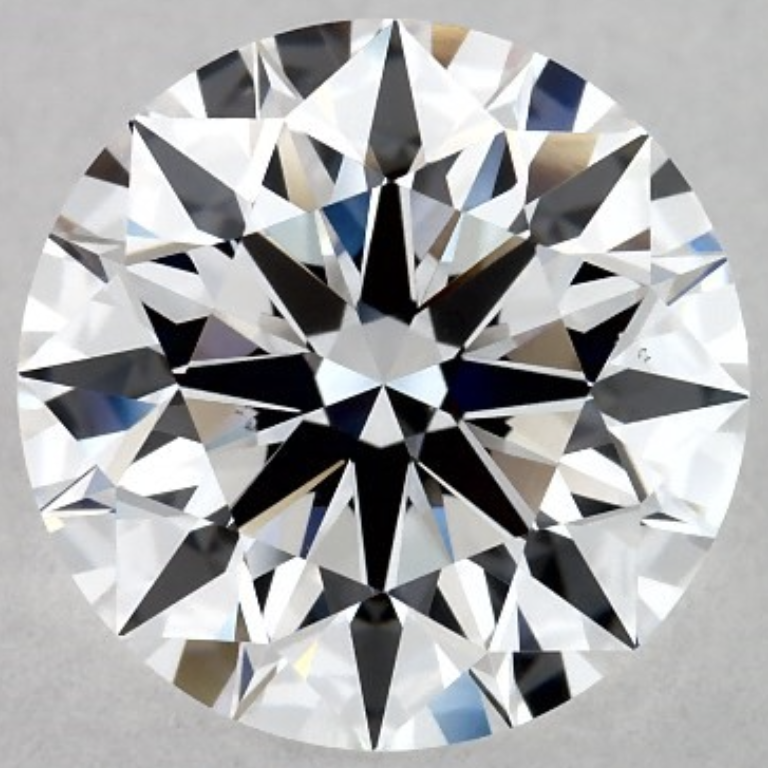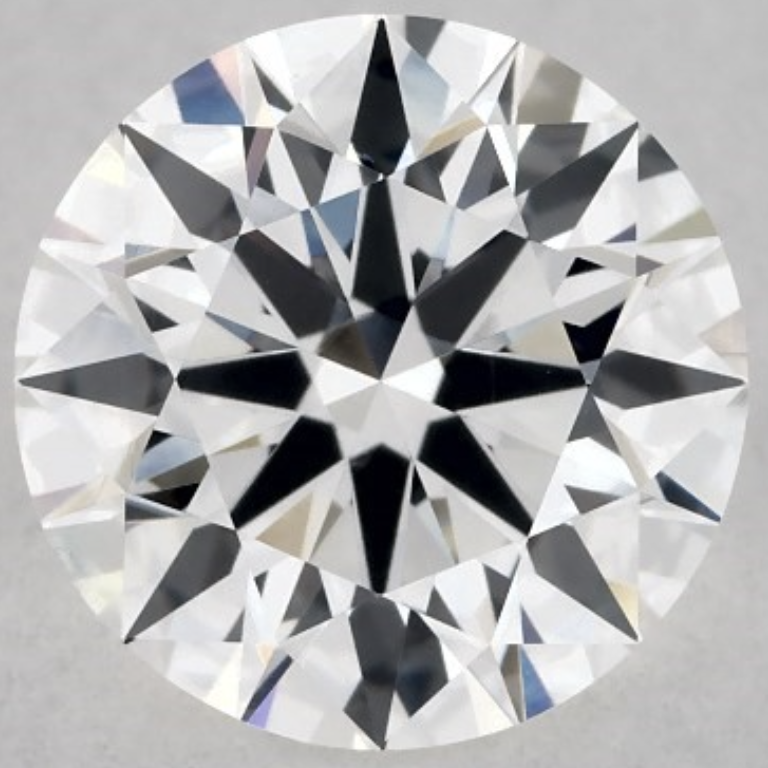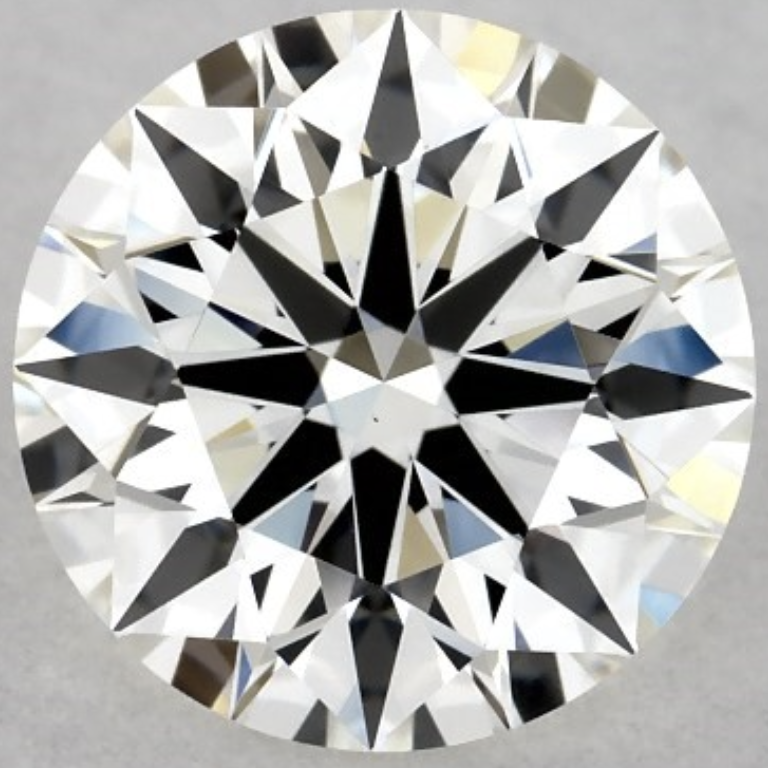When shopping for a diamond, one of the most common questions is whether color or clarity matters more. Both affect how your diamond looks, but only one will give you the best value for your budget. The good news is that you do not need to aim for perfection in both. With the right strategy, you can compromise smartly and still get a diamond that looks stunning to the naked eye.
In this guide, I will show you exactly how to choose between diamond color and clarity based on what truly matters. You will learn how to spot the best deals, avoid costly mistakes, and walk away with a diamond that sparkles just as brightly as one twice the price.
Now, if you have already read about the science behind a diamond’s sparkle and why cut should never be compromised, you might be wondering how much flexibility you have with the other 4Cs. Can you go lower on clarity or color without making your diamond look worse?
The answer is yes, especially when you know what to look for. While cut always needs to be top-notch, clarity and color offer more room to save if you play it smart.
Many readers ask me which is the smarter area to compromise. Which is more noticeable to the eye? And where can you trim the budget without losing visual beauty?
That is exactly what I will cover in this article. We will start with a guide on how to compromise on both clarity and color. Then, I will give you my conclusion and tell you which factor you should prioritize if you want to get the best value for your money.
Diamond Color vs Clarity: What’s the Real Difference?
When comparing diamond color and clarity, the difference might seem straightforward at first. Color describes how white or tinted a diamond appears, while clarity reflects how free the stone is from internal or surface imperfections. However, once you begin shopping, the comparison becomes much more nuanced. You are no longer just looking at textbook definitions. You are evaluating how each factor affects what you actually see, how it influences the overall beauty of the diamond, and most importantly, how it impacts the price.
Both color and clarity influence the appearance and price of a diamond, but they do so in very different ways. And more importantly, their impact is not equal. One of them is far more likely to be visible to someone admiring your ring. That is where the real difference lies.
Let’s break it down clearly:
| Aspect | Diamond Color | Diamond Clarity |
|---|---|---|
| What it means | The degree of whiteness or tint visible in a diamond | The presence of internal or external imperfections |
| Grading scale | D (colorless) to Z (light yellow or brown) | Flawless to Included (FL, IF, VVS, VS, SI, I) |
| Most visible where | Side view or when compared with a whiter diamond | Top view under magnification or in step cuts |
| How it is judged | By comparison to master stones in white lighting | At 10x magnification with attention to location and type |
| Most visible in | Larger stones, white gold or platinum settings | Lower grades (SI2 or below), especially in step cuts |
| Influence on price | Moderate price changes with each grade | Steeper price drops at each tier below VS1 |
| Impact on appearance | Visible tint when compared side by side | Often invisible to the naked eye if eye-clean |
| Best value range | G to J color | VS2 to SI1 clarity (eye-clean) |
What Really Stands Out to the Eye?
Most people will not notice tiny inclusions in a diamond, especially when it is set in a ring and viewed under normal lighting. But even a small hint of warmth or tint in the diamond’s body color can be visible, particularly when the stone is compared with a whiter one. This difference becomes especially apparent in larger diamonds and when paired with white metals such as platinum or white gold.
This is where color tends to stand out more than clarity. A diamond that is not perfectly white can catch the eye quickly, while a small inclusion that cannot be seen without magnification has little to no impact on everyday beauty. That is the real-world difference that matters most.
Real Talk from an Industry Professional
Speaking as someone who works in the diamond industry every day, I can tell you that the vast majority of diamonds in the SI1 and even SI2 range appear completely clean to the naked eye. If the inclusion is small, off to the side, or masked by a prong in the setting, it may never be noticed at all. On the other hand, color is harder to hide. Even a single grade lower in color can sometimes be noticed, especially in a white metal setting or when viewed next to a whiter diamond.
Understanding what you can and cannot see in real life makes all the difference when deciding where to invest your budget. This practical perspective is what helps shoppers avoid overspending on features that do not improve the visual experience.
Why Clarity Isn’t Always Worth Paying For
When shopping for a diamond, many people assume that higher clarity always means a more beautiful stone. After all, who would not want a flawless diamond? But in reality, clarity is one of the most misunderstood parts of the diamond grading system.
A diamond can have visible inclusions and still sparkle beautifully, or it can be technically flawless and yet offer no additional visual appeal once it is set in a ring. This is where understanding what eye-clean really means becomes essential.
An eye-clean diamond is one where inclusions cannot be seen with the naked eye under normal lighting. That means no distracting marks, no cloudiness, and nothing that takes away from the diamond’s overall brilliance. Most people are surprised to learn that many diamonds in the VS2 to SI1 range are eye-clean, especially in round brilliant cuts.
In fact, the SI1 range is often where the best value is hiding. These diamonds can look identical to higher clarity grades, especially if the inclusions are off-center, small, or concealed by a prong in the setting. Paying for a higher clarity grade does not always give you something you can see. What it gives you is a cleaner report, but not necessarily a better-looking diamond.
To show just how much clarity influences price, even when two diamonds can appear identical to the naked eye, here is a clear breakdown of current average prices for 1.00 carat, H color, GIA Excellent Cut round diamonds by clarity grade. These ranges are based on real market data as of May 2025:
| Clarity Grade | Price Range (USD) | Notes |
|---|---|---|
| IF | $4,900 – $6,700 | Internally flawless premium |
| VVS1 | $4,600 – $6,300 | Extremely rare clarity |
| VVS2 | $4,300 – $5,900 | Very high clarity |
| VS1 | $3,900 – $5,400 | Always eye-clean |
| VS2 | $3,500 – $4,900 | Most are eye-clean with inspection |
| SI1 | $3,000 – $4,300 | Can be eye-clean with careful selection |
| SI2 | $2,100 – $3,800 | Some are eye-clean, others not |
| I1 | $1,900 – $3,200 | Usually not eye-clean |
These ranges reflect current listings from James Allen and Blue Nile for 1.00 carat, H color, GIA Excellent Cut round diamonds as of May 2025. These online retailers often offer significantly better pricing than brick-and-mortar stores.
As you can see, clarity has a significant impact on price, even when the difference is invisible to the naked eye. That is why shoppers who understand the concept of eye-clean clarity can save hundreds or even thousands of dollars without sacrificing beauty. And with the average center stone size increasing from around 0.9 carats to 1.1 carats over the past five years in the US, more buyers are reaching for that one carat milestone making smart clarity decisions even more important. But how does this play out when you look at real diamonds side by side?
Here you see a side-by-side comparison of two James Allen True Hearts diamonds. Both are top-tier in terms of cut quality, which means we have removed cut from the equation. What you are seeing is a pure test of clarity difference only.
- Left: SI1 clarity, H color, 1.10 carat — $3,400
- Right: VVS1 clarity, H color, 1.01 carat — $5,250
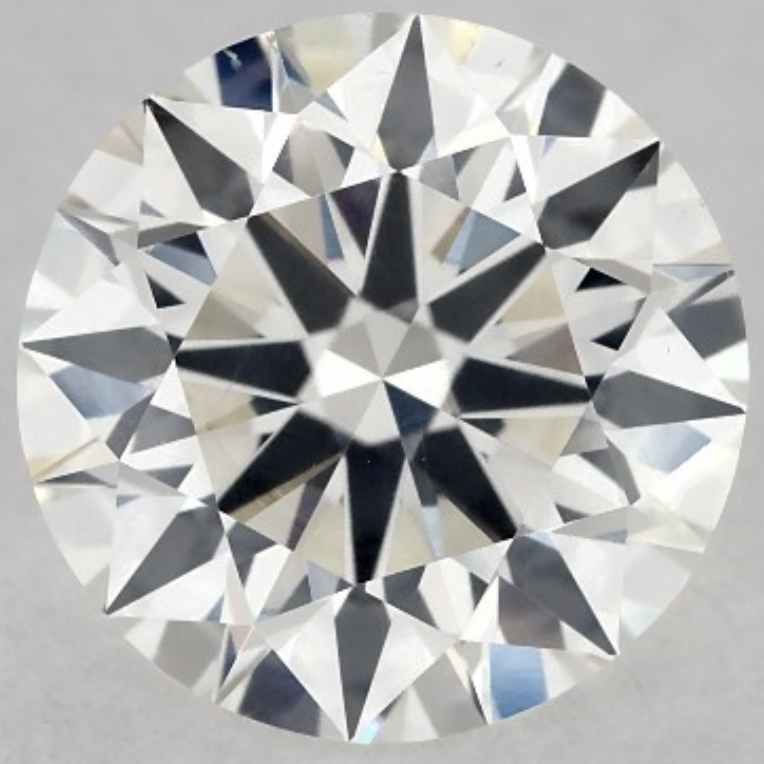
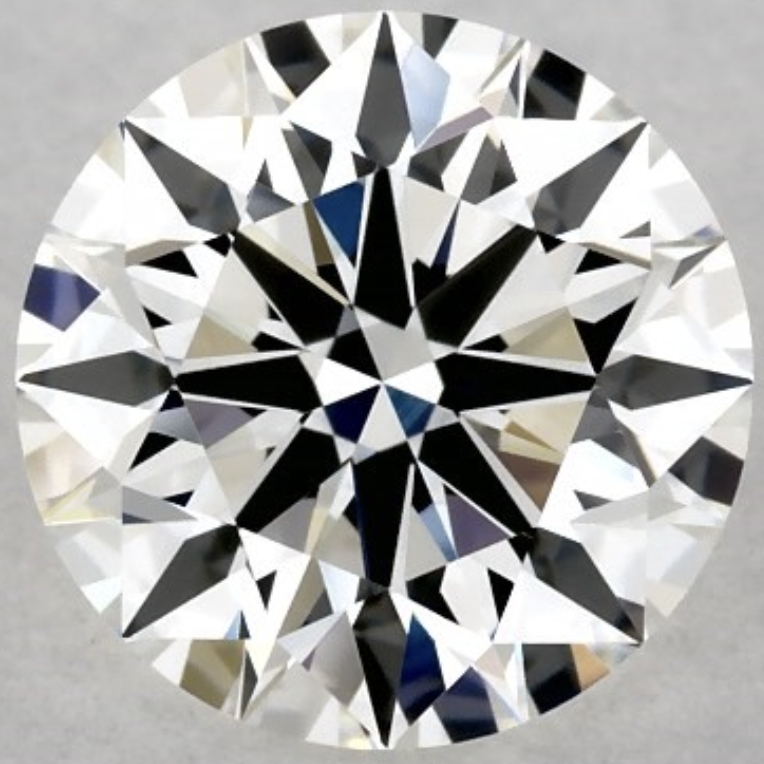
Both diamonds are eye-clean. The SI1 stone does have a small twinning wisp inclusion at the girdle area near 11 o’clock, but it is barely visible even under magnification. It does not impact the face-up view or sparkle in any way, and would be fully covered in most prong settings.
The VVS1 diamond, as expected, shows a flawless internal structure, but that perfection comes at a much higher price: over $1,800 more despite being smaller in carat weight. And most importantly, it offers no visual benefit to the naked eye.
This is exactly why higher clarity does not always lead to a better diamond. When both stones are mounted, they will appear virtually identical to any viewer. The only thing you will notice is the difference in price.
While the difference between SI1 and VVS1 is often invisible, what about diamonds within the same clarity grade? Can an SI2 ever look just as clean as a higher-grade stone?
Surprisingly, yes. And what follows is a perfect example.
Eye-Clean SI2 vs Non Eye-Clean SI2 – A Powerful Contrast
Here we compare two SI2 clarity diamonds: same grade, but entirely different visual experiences.
Left: 1.05 carat, H color, SI2 clarity from Blue Nile
Right: 1.00 carat, G color, SI2 clarity from James Allen
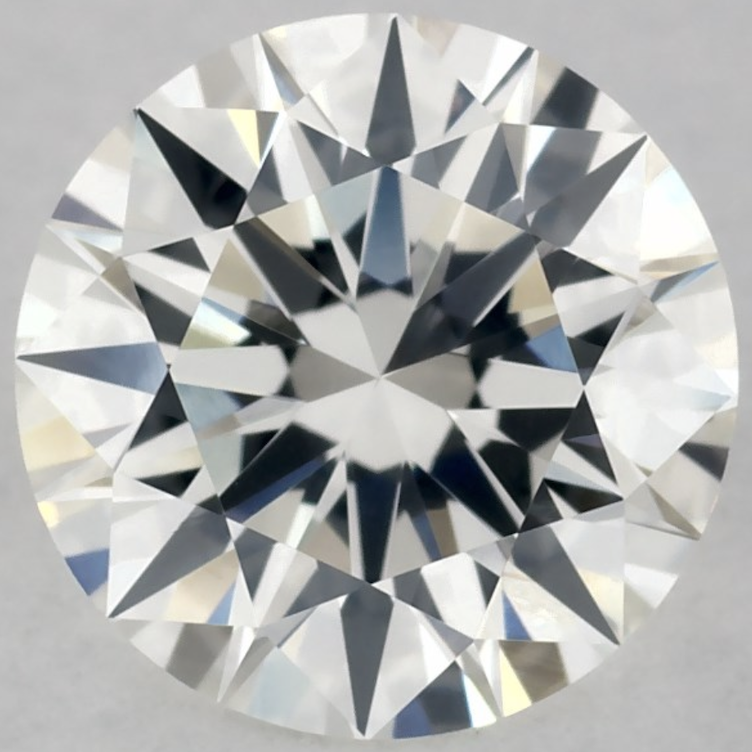
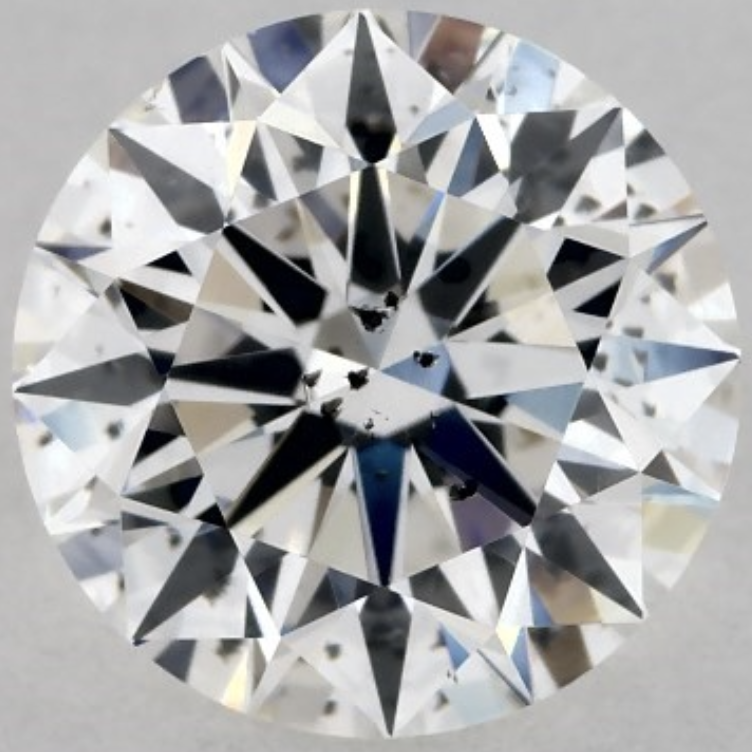
Both diamonds are technically graded SI2, but the outcome could not be more different.
The Blue Nile diamond on the left is eye-clean, even under 40x magnification. It features a small feather inclusion near the edge of the table, which you can see noted on the clarity plot. Yet even at extreme zoom, the feather remains invisible to the naked eye and to most viewers even under scrutiny. This is a rare find for an SI2 diamond, but it shows that with enough care and a bit of luck, you can uncover real hidden gems at lower clarity levels.
In contrast, the James Allen diamond is a textbook case of what to avoid. The center of the table is covered with dark crystal inclusions, which are not only visible but sit in the most unforgiving part of the diamond: dead center, where light enters and exits the stone. These types of inclusions are among the worst for beauty and sparkle, as they absorb light and draw the eye.
This side-by-side proves an essential point: a clarity grade is not the full story. You need to look closely at the type, position, and visibility of inclusions. That is exactly why I created my complete guide to diamond inclusions, so you know not only what is inside the diamond, but whether it actually matters.
The setting also plays a role. A halo or three-stone setting can distract the eye and soften the impact of minor imperfections. Meanwhile, a solitaire setting puts all the visual emphasis on the diamond itself making any visible inclusion more noticeable.
This is why high clarity grades like VVS1, VVS2, or IF are often unnecessary for most shoppers. They dramatically increase the price but typically offer no visual advantage once the diamond is eye-clean. At that point, the clarity grade becomes more about paperwork than real-world beauty.
The goal is not to chase a perfect report. The goal is to choose a diamond that looks perfect to the eye. That is how you get the most brilliance and the best value for your budget.
Clarity vs Shape – Some Cuts Show Inclusions More
Not all diamond shapes reveal inclusions in the same way. Some cuts naturally mask imperfections, while others tend to highlight them.
Brilliant cuts like Round, Cushion, and Oval have more facets that scatter light, helping to hide small inclusions. These shapes are more forgiving and often allow you to go slightly lower in clarity while still maintaining an eye-clean look.
Step cuts like Emerald and Asscher are the opposite. Their long, open facets create a window-like effect that makes inclusions easier to spot, even if they are small. For these shapes, it is usually safer to stay in the VS1 to VS2 range to avoid visible flaws.
This side-by-side comparison makes the difference crystal clear.
- Left: Round Cut, H color, SI1 clarity — feather inclusions around the edges
- Right: Emerald Cut, H color, SI1 clarity — dark inclusion in the center
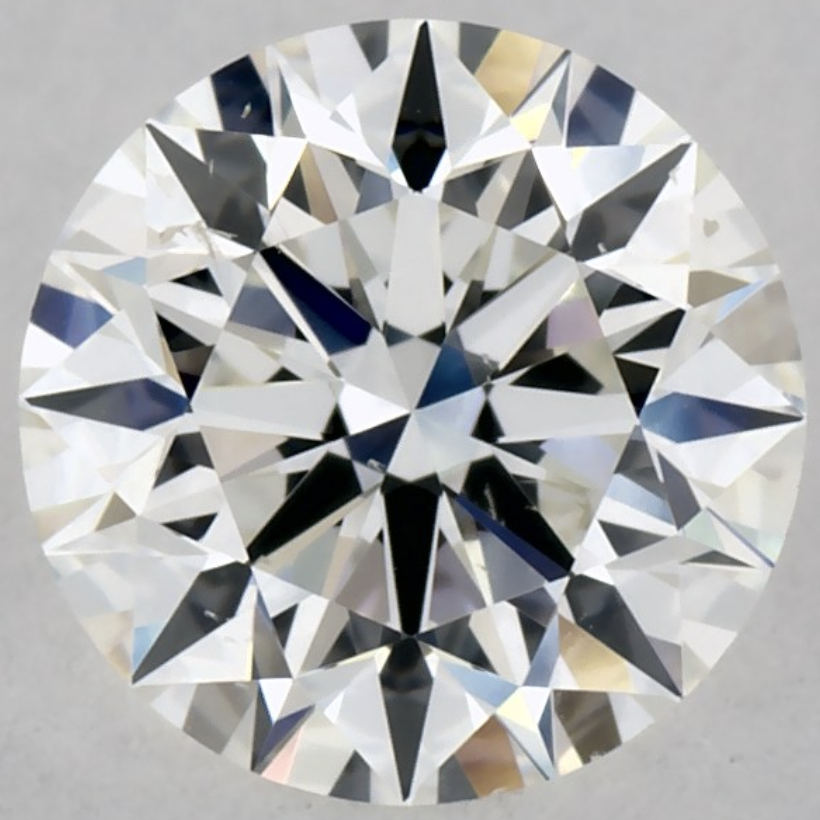
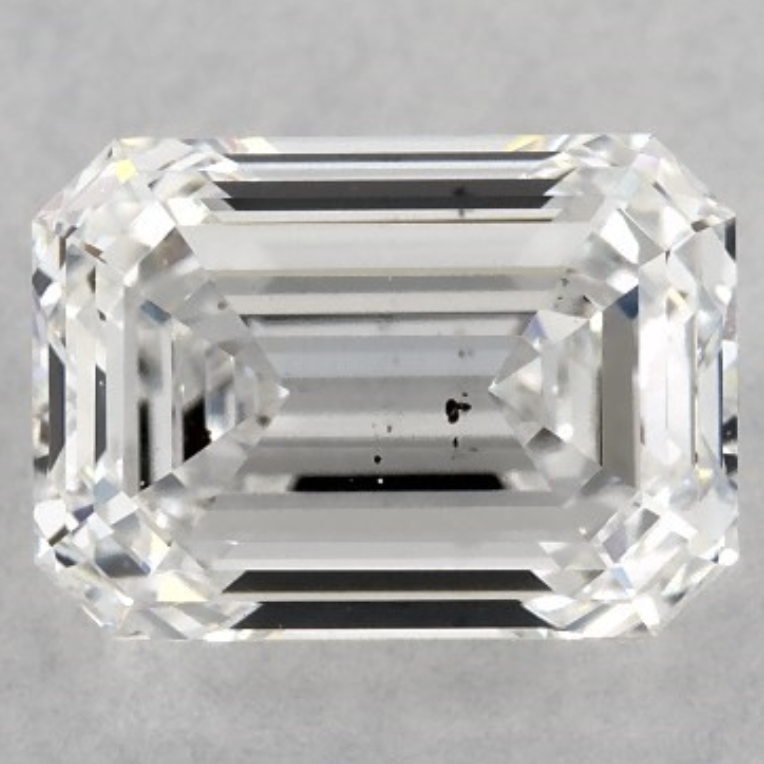
Both diamonds are graded SI1 on paper, but their real-world appearance could not be more different.
The Round diamond appears completely clean when viewed face-up. Its brilliant facet pattern breaks up light in a way that hides the feather inclusions around the edges. Even under magnification, the inclusions are difficult to spot and once the diamond is mounted, they would be virtually impossible to see.
The Emerald diamond, on the other hand, puts its inclusions on full display. The black crystal sits right under the table, and the long, transparent facets of the step cut act like a magnifying window, drawing the eye directly to the flaw. There is nowhere for the inclusion to hide.
This is exactly why clarity requirements change depending on the shape. In brilliant cuts like Round or Cushion, you can often drop to SI1 or even SI2 if the inclusions are well-placed. But with step cuts like Emerald or Asscher, the open, mirror-like surfaces highlight even minor imperfections. For these shapes, it is usually safest to stay within the VS1 to VS2 range if you want a diamond that looks clean to the naked eye.
How to Spot the Right Diamond Color for Your Ring
One of the biggest surprises for first-time ring shoppers is how much diamond color can change depending on the setting, lighting, and even the metal you choose. A diamond that looks slightly tinted in lab conditions might appear perfectly white once it’s placed in a ring.
That’s why choosing the right color grade isn’t about chasing a perfect letter. It’s about knowing how color behaves in the real world, and where it actually matters.
In this section, you’ll learn how to spot visible differences, how setting metals affect your perception of color, and how to find the sweet spot where beauty and budget meet.
Face-Down vs Face-Up: Why Diamond Color Looks Different Once Mounted
Diamond color is graded when the stone is loose, upside down, and compared to master stones under standardized white lighting. But no one wears diamonds like that. Once mounted and viewed from the top, a diamond’s color can appear warmer or cooler depending on light, metal type, and surrounding reflections.
In real life, most people cannot distinguish a D from an F or even an F from an H without holding them side by side. A diamond that appears slightly warm under lab conditions can look completely white once set especially in a well-matched setting.
The metal you choose can either highlight or soften the tint of a diamond. Here is how color interacts with different ring settings:
- White gold or platinum: These bright, cool-toned metals tend to make any tint in the diamond more visible. If you’re considering a lower color grade like I or J, it may show slightly more in this setting.
- Yellow gold and rose gold: These warm metals can visually neutralize a hint of yellow in the diamond. You can easily go with a G to J color grade and the diamond will appear whiter by contrast.
This is one of the biggest areas where shoppers unknowingly overspend chasing high color grades that offer no visible improvement once mounted. In fact, a well-chosen setting can make an H or even I color diamond look nearly as white as a D color stone.
To prove that point, let’s take a look at three diamonds of identical shape and cut: one D color, one G color, and one I color. Each one is shown in three ways: face-up, facedown, and mounted on a white gold ring.
The face-up images are what you would see in real life when admiring the diamond from the top. As you’ll notice, the D and G color diamonds appear almost identical, with the I color only beginning to show a subtle warmth. It’s a great reminder that diamond color is incredibly nuanced once the stone is actually viewed the way it’s meant to be worn.
Now look at the same three diamonds from the bottom in the facedown view. This is how diamonds are graded in labs under strict lighting and white backgrounds:
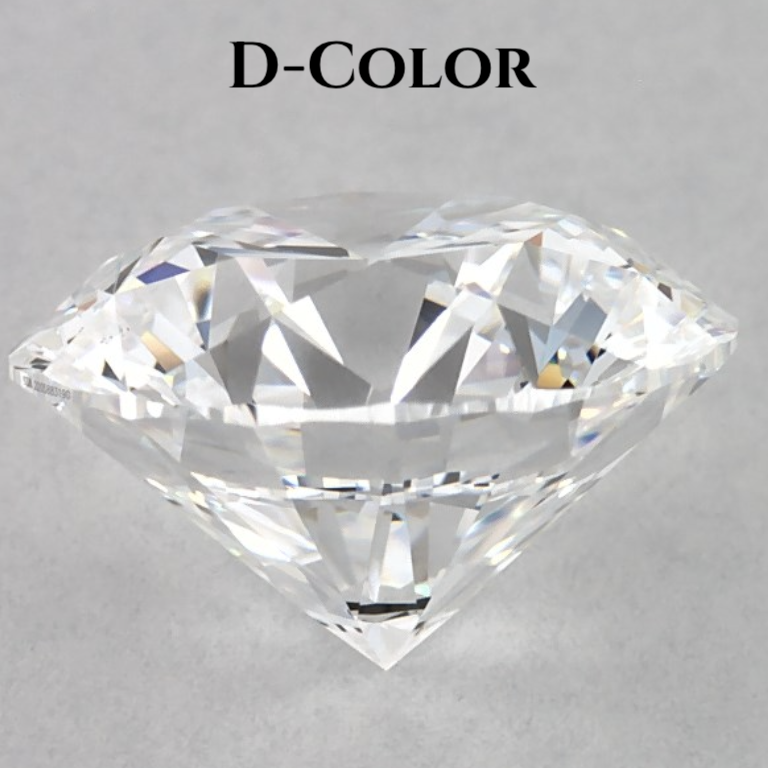
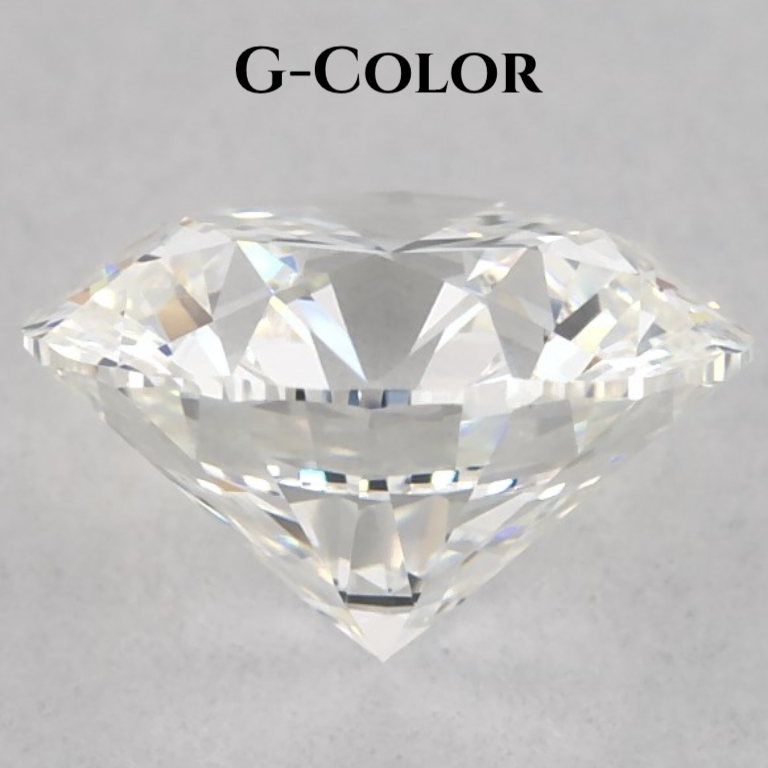
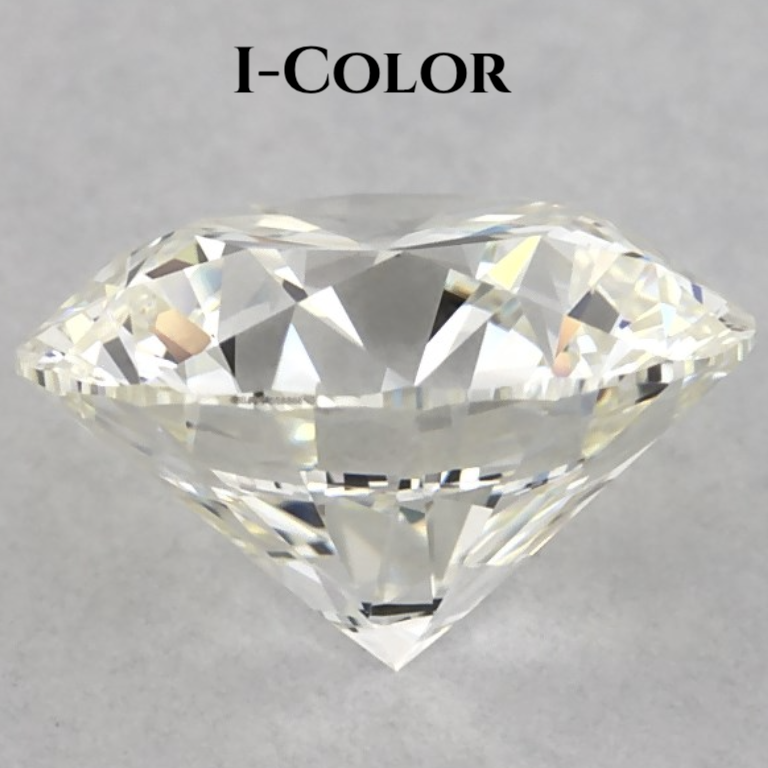
Suddenly, the difference between D and I becomes much clearer, even though it’s not something most people will ever see once the diamond is set. It helps explain why lower color grades are often penalized more than they deserve.
Finally, see how each one looks mounted in a white gold ring setting:



This is the true test. The D color diamond holds its icy brightness, but the G and even the I color look surprisingly white once placed in a high-reflective setting. This is exactly why G and H colors are such popular sweet spots: they offer nearly the same visual result for much less money.
The bright, neutral lighting in these photos reveals each diamond’s true color without exaggerating reflections, offering a realistic view of how they appear once mounted. In everyday lighting conditions (which are often softer, warmer, or less direct) these color differences would be even harder to notice, making the real-world visual gap even smaller.
To be clear, even after years of working with diamonds, I have rarely been able to spot a visible difference between a D and a G color diamond once the stone was mounted especially in a yellow gold or rose gold setting, where the warm tone naturally softens any hint of color. Even in white gold or platinum settings, the difference is so subtle that without a direct side-by-side comparison under strict lighting, most people would never notice it.
So while the visual difference between D, G, and even I color diamonds can be subtle once mounted, the price difference is not. Here is a real-world snapshot of what diamond color does to pricing:
| Color Grade | Price Range (USD) | Notes |
|---|---|---|
| D | $4,900 – $6,200 | Colorless, premium pricing |
| E | $4,700 – $6,000 | Very bright white, nearly indistinguishable from D |
| F | $4,400 – $5,800 | Last step of the colorless range |
| G | $4,100 – $5,300 | Top of near-colorless, great balance of value and appearance |
| H | $3,800 – $4,900 | Near-colorless, minor warmth visible to experts only |
| I | $3,300 – $4,400 | Faint warmth, blends well with yellow or rose gold |
| J | $2,800 – $3,800 | Noticeable tint in white settings, good value in warm settings |
| K | $2,400 – $3,400 | Clearly tinted, often used for vintage or antique-style rings |
These ranges reflect current listings from James Allen and Blue Nile for 1.00 carat, VS2 clarity, GIA Excellent Cut round diamonds as of May 2025.
If you are interested in a deeper dive, I have dedicated guides on choosing the best diamond color for white gold, platinum, yellow gold, and rose gold settings. Each guide explores how different metals interact with diamond color and how you can make a smart, beautiful choice based on your preferences and budget.
Consider Diamond Size and Shape
Larger diamonds tend to show color more than smaller ones. So while a J color might look perfectly white in a 0.75 carat stone, the same grade may show a faint tint in a 2.00 carat diamond.
Shape also plays a role:
- Brilliant cuts like Round, Cushion, and Radiant reflect more light and mask color better.
- Step cuts like Emerald and Asscher have long open facets that reveal body color more clearly, so you may want to choose a higher color grade.
To make things even easier, here’s a quick reference table showing the best-value color ranges for each combination of ring metal and diamond shape. These are the sweet spots where beauty and budget meet:
| The best bang for the buck diamond color grades | |
|---|---|
| White Gold/Platinum Ring Setting: | Yellow Gold Ring Setting: |
| Round cut diamonds: H–J | Round cut diamonds: K–M |
| Princess, Asscher and Emerald cut diamonds: G–I | Princess, Asscher and Emerald cut diamonds: J–K |
| Marquise, Oval, Pear, Heart cut diamonds: F–H | Marquise, Oval, Pear, Heart cut diamonds: I–J |
The combination of size, shape, and setting should guide your ideal color range and not the grading report alone.
Fluorescence: Friend of Foe?
Diamond fluorescence often gets a bad reputation, but in many cases, it can actually improve how a diamond looks especially in lower color grades like H, I, or J, where blue fluorescence can make the diamond appear whiter. It can also lower the price without affecting beauty.
Moderate to strong fluorescence in a near-colorless diamond is usually not a problem at all, and in some lighting, it can enhance the appearance. The only time it may be a concern is in colorless (D–F) diamonds with very strong fluorescence, which can sometimes cause a hazy or oily look although this is rare and should be judged case by case.
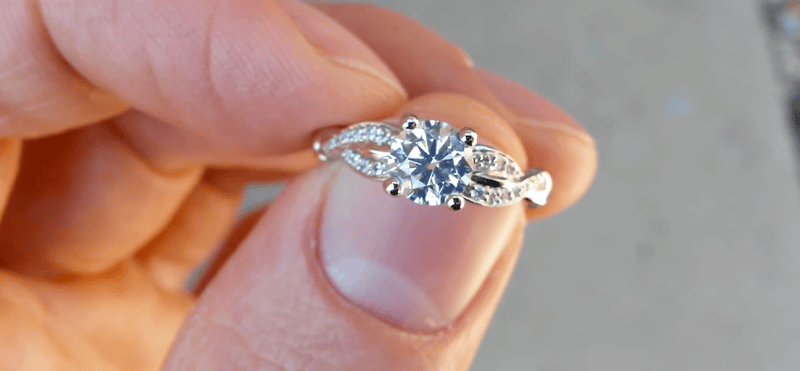
In short: Fluorescence can be your ally, not your enemy especially if you want better value in the near-colorless range.
Want the full breakdown?
Check out my full guide to diamond fluorescence
Which One Should You Prioritize – Color or Clarity?
Once a diamond is eye-clean, upgrading to a higher clarity grade rarely makes a visible difference. A VS2 diamond can look identical to a VVS1 to the naked eye, yet the price difference can be significant. The added cost is mostly for paper-grade perfection and not for visual improvement.
Color, on the other hand, can be seen more easily in real life, especially when the diamond is set in white gold or platinum. Even a small step down in color grade can make a visible difference in certain lighting or when compared side by side.
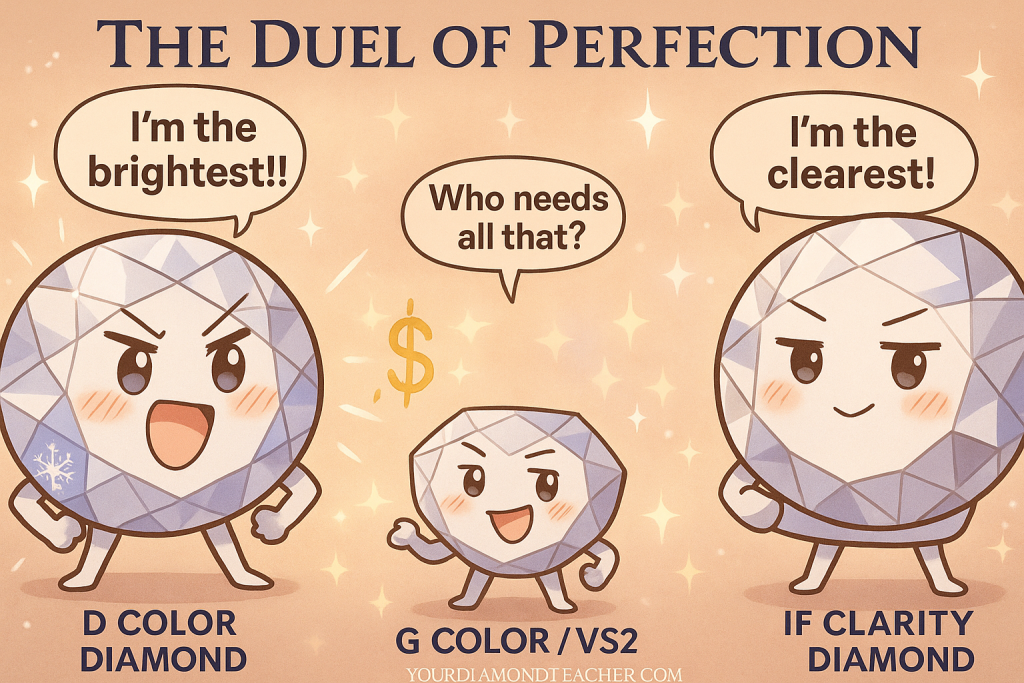
This is why, in most cases, it makes sense to prioritize color over clarity but only after you’ve ensured the diamond is eye-clean. Once that’s confirmed, you’ll get a better return on appearance by going for a slightly higher color grade rather than overpaying for microscopic clarity.
If you’re working with a tighter budget, my recommended strategy is to:
- Start in the VS2 to SI1 clarity range
- Focus your budget on hitting a higher color grade (like G or H)
- Consider a setting that complements the diamond’s tone
That way, you keep the diamond beautiful to the eye and smart for the wallet.
Key Takeaway
If your diamond is eye-clean, upgrading clarity won’t change how it looks but improving color often will. That’s why color should be your priority once clarity is good enough.
The smartest move? Stick to the VS2 to SI1 clarity range, confirm the diamond is eye-clean, and use the savings to boost color or carat. That’s how you get a stunning diamond without overpaying.
To put this strategy into action, I recommend starting your diamond search with one of the top-tier online retailers my readers consistently rave about:
James Allen – The largest online diamond collection, hands down. If you want unmatched variety, lab-grown or natural, and 360° ultra-zoom videos that let you inspect every sparkle, this is where to go. Their interface makes it easy to compare and confidently pick the best eye-clean option.
Blue Nile – Legendary for their competitive prices on settings and a huge inventory of certified diamonds. They make building a ring fun and budget-friendly, especially if you’re after style flexibility and reliable support.
Whiteflash – For brilliance nerds. Their A CUT ABOVE® super ideal diamonds are made for those who want next-level light performance and precision craftsmanship. Think of it as diamond science, perfected.
Pro tip: These platforms let you take your time, compare real diamonds in high-res, and make a smart choice without any pressure. Use your clarity savings to boost color or carat, and walk away with a ring that looks flawless to the eye and not just on paper.
